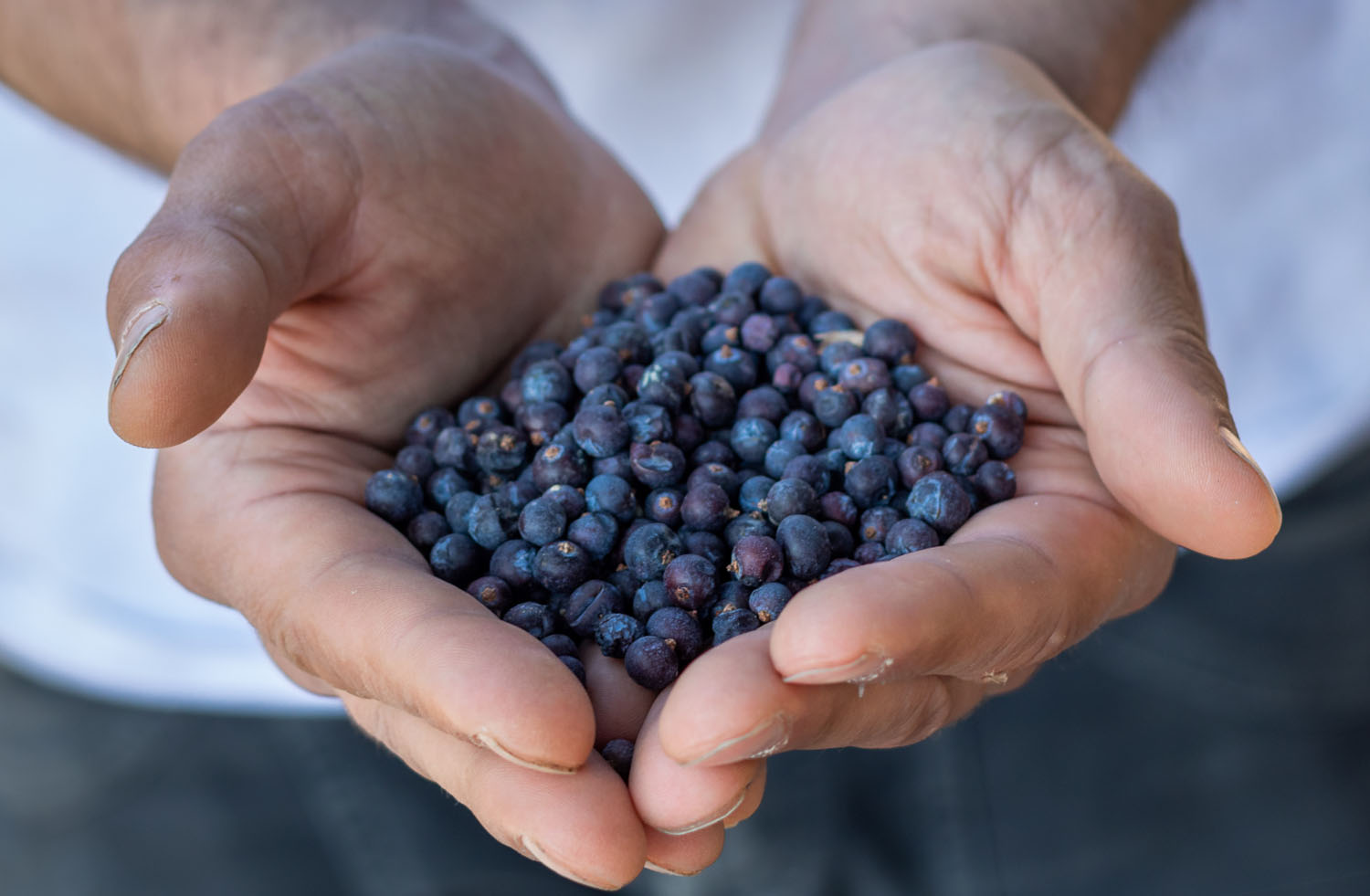The production of Banxiae gin consists of 4 stages:
Let's delve into them one by one.

The first step is to choose the botanicals.
The Banxiae gin recipe calls for 7: common juniper berries (the starting base for all London Dry Gin), coriander, angelica, pink pepper and helichrysum, Banksiae rose and olive leaves.
The selection of plant essences, the dosage of each and their combination are crucial in defining the taste of the gin.
We at Banxiae personally harvest and care for the 3 main botanicals namely juniper, rose and olive-tree
leaves.
These plants have different times. In fact:
We are always the ones who adapt to the timing of our plants, just as happens in viticulture for wine production.
Before distillation, some botanicals must be dried. Juniper is one of them. A natural process is followed for its drying: we arrange the berries on metal trays and leave them to rest in protected places, but with continuous air exchange; the same process applies to Banksiae rose. For olive leaves we add a step: drying them in a professional oven to reduce their moisture content. After several attempts, we have determined that a 40 percent drop gives us the best results in terms of gin production.

The decisive and most characteristic stage in the production of gin is distillation (by steam in which the botanicals do not come into contact with the liquid in the still and which is the best method for extracting the essential oils, which give character to the gin and) for which we rely on a distillery in Gubbio, not far from Perugia.
Here's how it works:
For London Dry Gin Banxiae we use a discontinuous still, so called because it processes the ingredients in multiple cycles and has to be refilled every time the distillation is finished.
Like all precious things, our still has its own name: Guinevere, like a queen.
Once distilled, the gin (it must be reduced in alcohol content by adding water and filtered to remove substances that are not soluble in water and would make the liquid cloudy) is ready for bottling. We have chosen to give Banxiae gin a refined and essential look, with a label embossed with the product name on the front and the origin of the gin's raw materials on the back. No garish colors, just black and white framing the transparent liquid (because it is dye-free). The focus is all on the product and the effort is to give clear information to those who choose to drink it.
Our bottles are numbered and each year their quantity varies: it happens because we have decided to produce only the gin we can distill from the main botanicals collected directly from us; it is an unbreakable principle. With the first distillation, in 2021, we produced 700 bottles; the second year, due to the difficult availability of juniper, only 250. But the unpredictability does not scare us: we like nature to take its course each year and decide what course will be taken to arrive at the alchemy of botanical scents and Umbrian stories that is gin Banxiae.